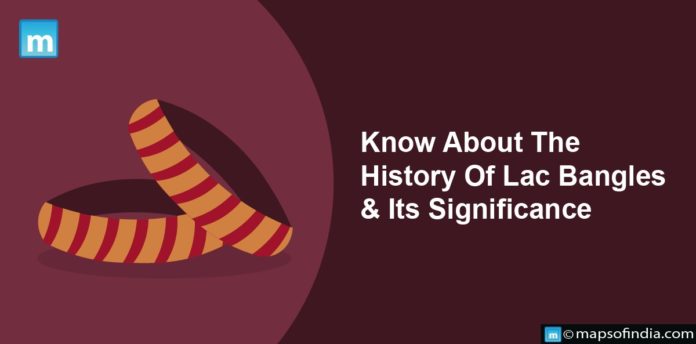Traditional Indian bangles, known as Lac bangles, are made of lac, a natural resin created by the lac bug. They are renowned for their vivid hues, creative patterns, and reasonable prices. In India, lakhs of bangles are worn by women of various ages and backgrounds and are frequently regarded as a symbol of fertility and marriage.
History
The origins of lac bangles go back many years. The Indus Valley Civilization, which flourished northwest of the Indian subcontinent between 3300 and 1300 BC, is where the oldest evidence of lac bangles was discovered. The Mahabharata and the Ramayana, two classic Hindu works, both refer lakhs of bangles. In ancient scriptures, goddesses like Parvati, the consort of Lord Shiva, and Lakshmi, the goddess of wealth and prosperity, are linked with lac bangles. India’s Mughal era (1526–1858) saw an exceptionally high demand for lac bangles. Millions of bangles were among the most valued treasures of the Mughal emperors and their queens, who were known for their love of fine goods.
Significance
A lot of things make Lac bangles necessary. They represent marriage and womanhood first and foremost. It is considered taboo for a married woman not to wear bangles in many Indian communities. Additionally regarded as protective, lac bangles are frequently worn to fend off evil spirits. The lac bangles are not only significant culturally but also fashionable. They can be worn to complete any ensemble and are available in various hues and patterns. Additionally, Lac bangles are reasonably priced, making them accessible to ladies from all social strata.
Process
The first step in creating Lac bangles is gathering lac resin from trees. This is accomplished by removing the resin from the tree branches where the lac bug nests have been constructed. After that, the lac resin is melted in a big saucepan. The resin must be regularly stirred throughout this process, which could take many hours, to keep it from burning. The molten lac resin is combined with wax and pigments to make a coloured dough when it has cooled. After that, the dough is formed into long, thin rods. The desired bangle shape is subsequently achieved by heating and bending these rods. Several equipment, including moulds and mandrels, are used for this.
The Lac bangles are chilled and polished after being formed. The bangles’ glossy surface is a result of this procedure. While the entire manufacturing procedure for Lac bangles might take many days, the final product is a stunning and robust piece of jewellery. The history and culture of India has lakhs of bangles. They stand for womanhood, marriage, and wealth. Additionally, Lac bangles make lovely and inexpensive fashion accessories. Lac bangles are still widely used in India today. They are regarded as an integral component of traditional Indian clothing and are worn by married ladies of all socioeconomic groups. Aside from its cultural and aesthetic value, Lac bangles are renowned for their sturdiness. Even with frequent wear, they can last for many years. Additionally, water-resistant, Lac bangles are a fantastic option for daily wear.




